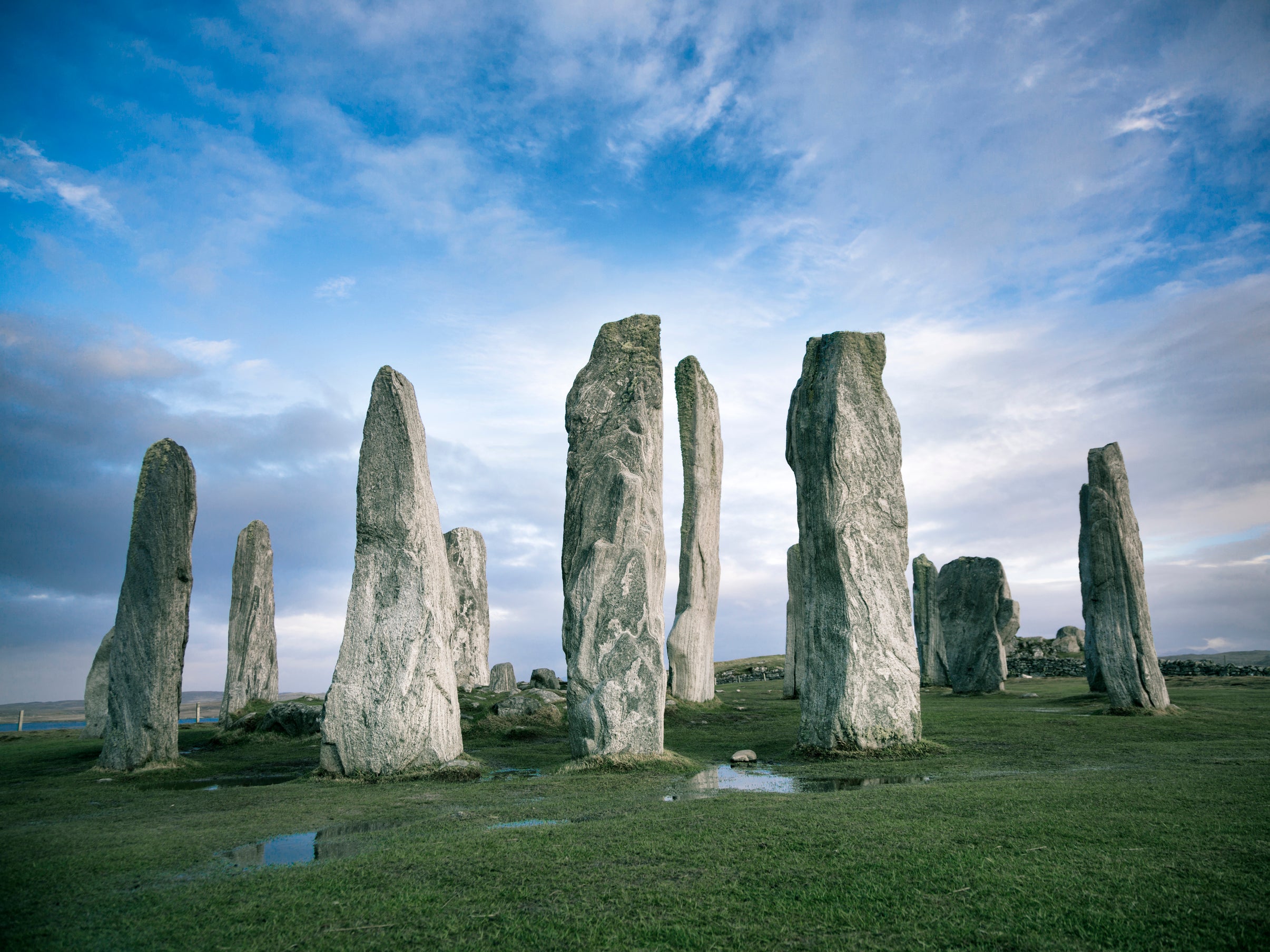What to do and see in the Outer Hebrides
From a crowd-free ‘Stonehenge’ to local whisky, here's why Scotland’s Western Isles are an irresistible prospect

The Outer Hebrides are islands of extremes: 119 islands (of which just 14 are inhabited) dangling in the far north-west corner of the map of the UK. They’re an area of beautiful, isolated beaches where you can enjoy Robinson Crusoe moments, your footprints the only ones on the sand. The wildlife, too, is breathtaking: deer to dolphins, otters to golden eagles are all easily spotted.
There’s a food trail, pointing you to the many small-scale outlets where you can enjoy salmon, chocolate cake or a dram of whisky produced with water from the island’s own hills. The islands also enjoy extremes of weather (witness the Force 10 storm that blew an oil rig ashore on Lewis in 2016) and if you are in search of elemental, battered landscapes without heading to the ends of the earth, this is the place to come.
See Stonehenge without the crowds
Callanish is Stonehenge without the crowds or the timed ticket entry – or indeed any ticket whatsoever. On the west coast of Lewis, it’s a haunting slender central monolith surrounded by a complex of stones perched on an elevated promontory. The site dates back 5,000 years and its provenance remains uncertain, though most likely was tied to lunar activity. At least a dozen satellite sites surround the central stones; two, Callanish II and Callanish III, are within easy walking distance of the main site.
Humanise history
New and shiny, the Museum nan Eilean, or island museum in the port of Stornoway hosts galleries and interactive displays about the past and present of the islands. Along with stunning footage of the islands’ natural wonders – which will whet your appetite to explore further – the museum humanises its stories of fishing, farming and song. Centre stage is given to six Lewis chessmen on long-term loan from the British Museum.
Stride along miles of sand
The Lewis chessmen were discovered on a wild beach in Uig, located in the far south-west of Lewis. Hidden in the sand for the best part of 300 years, they were revealed either by a storm or a cow rubbing its backside on a dune (there’s no correct answer, so take your pick). Uig sands are eye-poppingly beautiful and immense: the tidal range is more than a mile and at low tide you can barely pick out the sea on the horizon.
Cycle the South Lochs
The North and South Lochs and the Pairc represent Lewis’s Empty Quarter, with some of the loneliest lanes in the UK. This is perfect cycling territory with gently undulating roads exploring a coastline every bit as indented as Norway’s. Must-see stops include Cromor for views across to Skye and Orinsay. Afterwards munch on cake and enjoy a coffee at the Ravenspoint visitor centre in Kershadar.
Eat crab ravioli
Steve Olley runs Croft 36, a kind of seaside shack serving crab ravioli, pasties and mouthwatering cakes. The fish has usually been caught the same morning by Steve. What’s more, it’s in a truly beautiful location in the township of Northton in South Harris overlooking dunes, sands and lagoons around Luskentyre that stretch northwards for more than 15 miles.
Sail the Sound of Harris
It’s hard to think of a more beautiful sea journey in the UK than the hour-long ferry from Leverburgh on Harris to Berneray. The CalMac ferry slaloms across the Sound of Harris between countless islets and the abandoned island of Pabbay. Look out for porpoises, puffins, gannets, skuas and golden and white-tailed eagles. A return foot passenger ticket is a bargain at £6.90.
Buy some local art
The Outer Hebrides are home to many artists and on a remote road by Loch Euphort on North Uist you’ll find Shoreline Stoneware, a studio run by the sculptor Louise Cook. Louise embellishes her eye-catching designs – such as ceramic baskets – with colours taken from the island shores. These include shells, rocks, seaweed, fishing nets and even washed-up glass – which gives a watery rockpool effect to her bowls.
Climb Benbecula’s single hill
If you climb just one hill in the Outer Hebrides, make it Rueval on Benbecula. Just 124m high, it rises abruptly from sea level to give extraordinary views up and down the Outer Hebrides. From the summit you’ll see why Benbecula is described locally as “more loch than rock” and the reason for the island’s Gaelic name, Beinn na Faoghla, which translates as “mountain of the fords”.
Drink a (legal) dram of whisky
Eriskay is best known for the novel Whisky Galore and the Ealing comedy of the same name. Both were based on the true travails of opportunistic islanders who indulged in some low-level law-breaking after the SS Politician, laden with 260,000 bottles of whisky, sunk nearby in 1941. The island pub, Am Politician, has two original whisky bottles from the ill-fated steamer behind the bar, though the whisky inside is sadly no longer palatable.
Hit the water
Take a kayak out on the waters around Barra at the southern end of the island chain. The island’s coastline is sliced and diced with countless inlets, bays and lochs and there are several uninhabited skerries on which to haul up and enjoy your own beach for a day and even camp overnight. Chris Denehy of Clearwater Paddling is a superb guide: half-day trips around Barra and neighbouring Vatersay £35; a week-long excursion with wild camping £735.
Mark Rowe is the author of Outer Hebrides, The Western Isles of Scotland, from Lewis to Barra, published by Bradt
Join our commenting forum
Join thought-provoking conversations, follow other Independent readers and see their replies
Comments
Bookmark popover
Removed from bookmarks